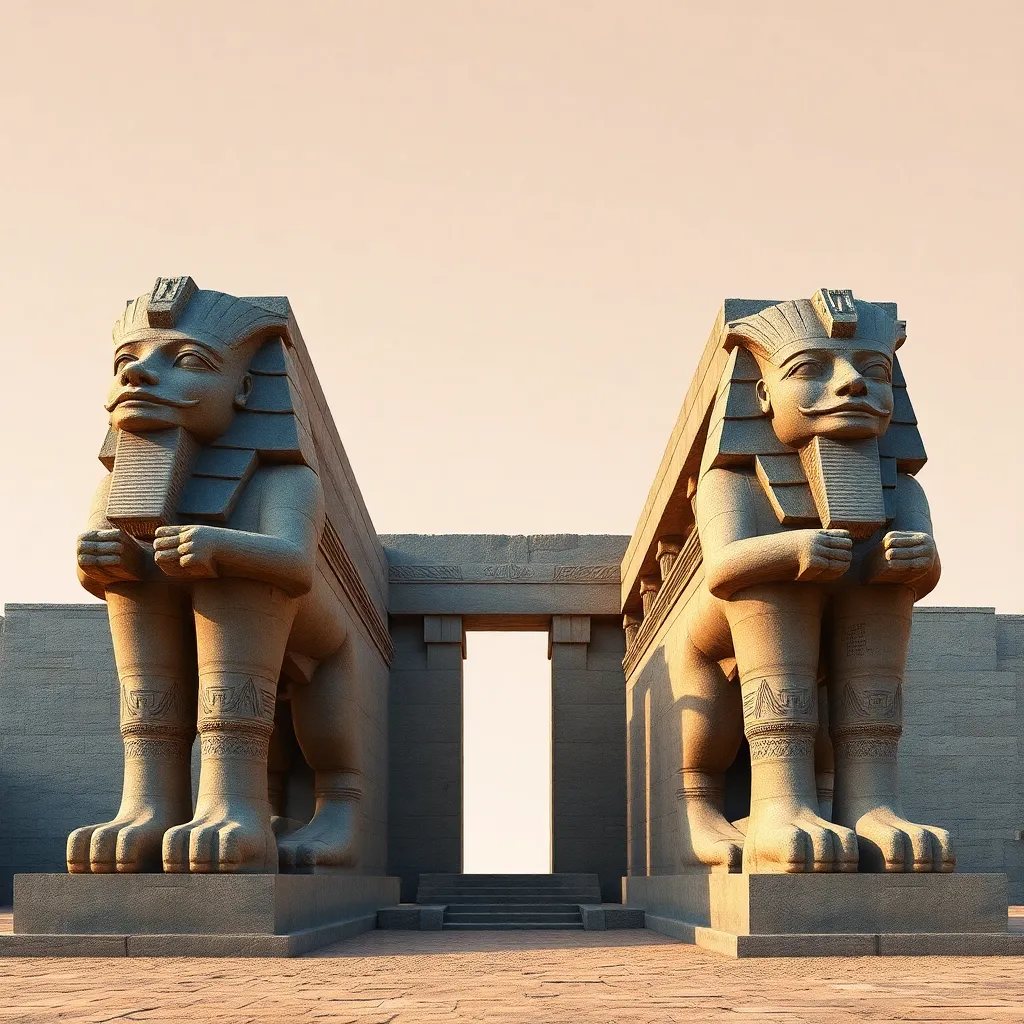The Lamassu in Mesopotamian Architecture: Symbolism and Architectural Significance
I. Introduction
Mesopotamian architecture is a fascinating study of ancient civilizations that flourished between the Tigris and Euphrates rivers, primarily in present-day Iraq. This architectural heritage showcases a blend of functionality, artistry, and symbolism, reflecting the values and beliefs of the societies that built them. Among the most striking features of Mesopotamian architecture is the Lamassu, a mythical creature that served as a significant architectural and cultural icon.
The Lamassu, with its unique composite form, was not merely decorative; it embodied the protective spirit of the ancient Mesopotamians, serving as guardians of cities and palaces. This article aims to explore the historical context, physical characteristics, symbolism, architectural significance, and the legacy of the Lamassu in Mesopotamian architecture.
II. Historical Context of the Lamassu
The origins of the Lamassu can be traced back to ancient Mesopotamia, specifically during the rise of the Assyrian Empire around the 9th century BCE. Over time, the Lamassu evolved, becoming a prominent feature in the architecture of various Mesopotamian cultures, including the Assyrian and Babylonian empires.
Throughout these empires, the Lamassu held cultural significance as a protector of the realm. They were often positioned at the entrances of palaces and cities, symbolizing the might and divine support of the rulers. Archaeological discoveries, including the remains of palaces adorned with Lamassu statues, have provided insight into their importance in ancient societies, revealing their role in both civic and religious contexts.
III. Physical Characteristics of the Lamassu
The Lamassu is characterized by its composite form, typically exhibiting the features of a human head, the body of a bull or lion, and large wings. This unique design symbolizes strength, wisdom, and vigilance, qualities greatly revered in Mesopotamian culture.
- Composite Creature Features:
- Human Head: Represents intelligence and authority.
- Body of a Bull or Lion: Symbolizes strength and courage.
- Wings: Signify protection and the divine.
- Size and Placement: Lamassus were often monumental in scale, standing at approximately 4 to 5 meters tall, strategically placed at entrances to palaces, temples, and city walls to maximize their protective symbolism.
Craftsmanship techniques included the use of high-quality stone such as alabaster, meticulously carved to depict intricate details. The artistry involved in creating these sculptures reflects the advanced skills of Mesopotamian artisans and their dedication to their craft.
IV. Symbolism of the Lamassu
The Lamassu served multiple symbolic purposes within Mesopotamian culture. As protective figures, they were believed to ward off evil spirits and intruders, ensuring the safety of the inhabitants and their rulers.
- Protective Function: Positioned at gateways, the Lamassu acted as guardians, making their presence felt as protectors of the sacred and the royal.
- Symbol of Power: The imposing nature of the Lamassu reinforced the authority of rulers, showcasing their divine right to govern and their connection to the gods.
- Connections to Mythology: The Lamassu is linked to various myths and religious beliefs, often associated with divinity and the cosmic balance of the universe.
V. Architectural Significance of the Lamassu
Architecturally, the Lamassu played a crucial role in the design of monumental structures. Their integration into palace and temple architecture not only added aesthetic value but also influenced the layout of these buildings.
- Integration into Architecture: Lamassus were often incorporated into the design of monumental gateways, providing a transition between the sacred and the secular.
- Influence on Design: The presence of Lamassu sculptures guided the spatial organization of palatial complexes, often dictating the flow of movement and the experience of the visitor.
- Impact on Later Cultures: The concept of using large protective figures influenced architectural styles in subsequent cultures, including Hellenistic and Roman architecture.
VI. The Lamassu in Art and Iconography
The Lamassu’s influence extended beyond architecture into various forms of art. They are prominently featured in sculptures, reliefs, and pottery, illustrating their importance in the daily lives and beliefs of the Mesopotamians.
- Representation in Art: Lamassu were frequently depicted in reliefs, showcasing their grandeur and intricate details.
- Contemporary Interpretations: Today, the Lamassu continues to inspire artists and architects, often seen in modern reinterpretations that pay homage to this ancient symbol.
- Influence on Modern Art: The Lamassu’s iconic status has made its way into contemporary art and architecture, symbolizing strength and protection in various contexts.
VII. Preservation and Legacy of the Lamassu
The legacy of the Lamassu is evident in the preservation efforts for artifacts and sites where these monumental figures were found. Currently, many Lamassu statues have been restored and are housed in museums worldwide, allowing for continued appreciation of their historical significance.
- Current Status: Many Lamassu artifacts are preserved in institutions such as the British Museum and the Louvre, showcasing their artistry and historical context.
- Conservation Efforts: Archaeologists and conservators work tirelessly to restore and protect these ancient figures, ensuring they withstand the test of time.
- Cultural Relevance: The Lamassu remains a symbol of cultural heritage, representing the rich history of Mesopotamia and its influence on contemporary identity.
VIII. Conclusion
The Lamassu stands as a multifaceted symbol in Mesopotamian architecture, intertwining notions of protection, power, and artistic achievement. Its enduring legacy continues to inspire and influence modern architectural practices and cultural expressions. Preserving such historical symbols is vital, as they provide insight into the values and beliefs of ancient civilizations, contributing to our understanding of human history.



